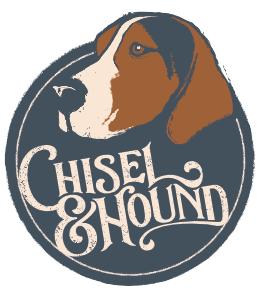The Basics of Traditional Shaving
Shaving doesn't have to be a chore. You don't have to settle for aerosol goo or waste a fortune on cartridges with seven blades, lube strips and vibrating handles.
More and more men are discovering the simple pleasure of wet-shaving, just like their grandfathers did. Getting started can seem intimidating and when you are used to a cartridge razor, the idea of putting a single blade to your neck can seem scary. So, I'd like to share a few tips and pointers for the beginners out there.
What is wet shaving, exactly?
Wet shaving is the process of using a wet brush and soap to create a lather instead of canned shave gel or cream. Most wet shavers also eschew fancy cartridge razors for simple, single blade safety razors or straight razors.
Why is it superior to what I do now?
It starts with the soap and brush. When you squirt cold, sticky goo out of a can and smear it on your face, you aren't properly preparing the hair to be cut or preparing your skin to have a sharp piece of metal raked across it.
Lathering with a warm brush and proper shave soap softens the whiskers and raises them up off the skin so that your razor can cut them effectively. The soap also moisturizes and lubricates the skin, which leads to less irritation.
Then there's the blade. When I was a kid, Gillette's big seller was the Atra. It was a cartridge shaver with two blades. The marketing for the Atra said that the first blade was to lift the hair (pull it) and the second blade cut it off below the surface of the skin. That (allegedly) leaves you with a smooth shave that lasted longer. Since that time, Gillette and its competitors have continued to add more and more blades to their cartridges, making them comically large and expensive.
The problem with cutting hair off beneath the surface of the skin is that the hair has to grow back out... that's what hair does. But if you have a hair that has been cut at an angle below the skin, it might not always grow back out straight. This leads to ingrown hairs and skin irritation. A single blade reduces that irritation immensely.
Following up your shave with a proper aftershave splash or balm does more than make you smell nice. Your aftershave should help refresh the skin without drying it out. It's a critical step in avoiding razor burn.
Won't I cut myself?
Safety razors got their name for a reason: they have a curved top cap that protects you from taking a bad angle and cutting yourself. When it comes to avoiding a cut, angle is everything. The best way to establish the correct angle is to set the cap of the razor against your face and slowly change the angle as you pull the razor across your face. You'll hear the blades begin to cut the hair and you'll know you have the angle.
Of course, if you run the blade side-to-side you can cut yourself, but the same is true of a cartridge razor as well.
I'm not going to discuss straight razors in this article, because they are an entirely different experience.
These razors and brushes look expensive. I thought this was supposed to be cheaper?
The razors and brushes I sell here aren't cheap, but they are an incredible value in the long term - especially when you consider the price of blades. A pack of 100 of my favorite blades can often be had for $8. (I include a 5-pack of these blades in every purchase).
A container of soap might cost as much as four cans of foam, but will last four times longer and will do a much better job.
Cheaper brushes can be had all over the place. The difference between a TDR brush and the ones you can buy at Target is night and day. My brushes aren't mass-produced for maximum profit. I make them by hand in my shop. From pouring my own resin, to sourcing the highest quality knots (that's the hair part of the brush), I am obsessed with providing you with an heirloom that you'll want to use every day.
Ok, can you show me how it all works?
I love this video and have sent it to tons of new wet shavers. This guy does a great job of breaking down the process ... and his voice is awesome.

